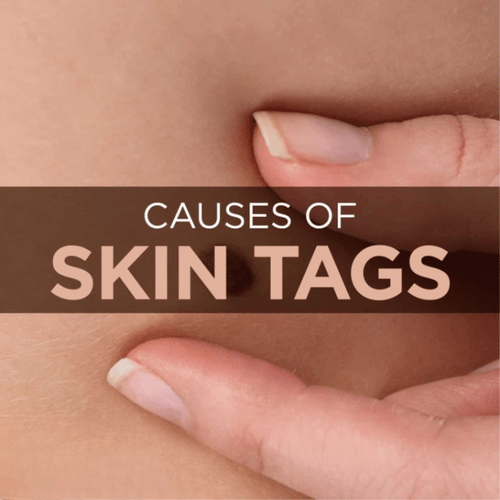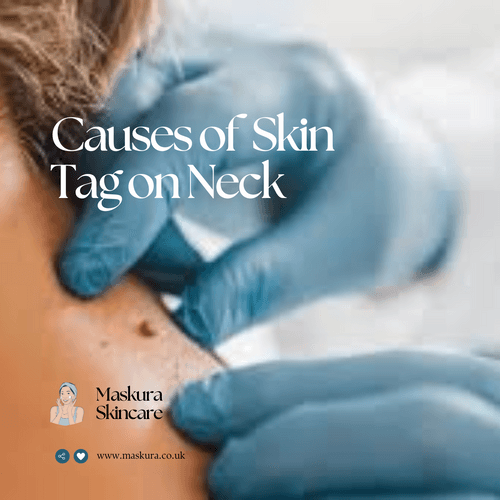Introduction
Skin tags, also known as acrochordons, are small, benign growths that commonly appear in areas where the skin folds, such as the neck, armpits, groin, and under the breasts. While they are harmless, many people find them unsightly or irritating and consider removing them. One question that often arises is, "Can I cut off a skin tag myself?"
In this blog, we'll explore the risks and considerations of cutting off a skin tag at home, as well as alternative methods for safe removal.
Is It Safe to Cut Off a Skin Tag?
Cutting off a skin tag may seem like a quick and easy solution, but there are several important factors to consider before attempting to do so.
Risk of Infection
One of the biggest risks of cutting off a skin tag yourself is the potential for infection. Skin tags have a blood supply, and cutting them off can create an open wound. If you use non-sterile tools or fail to properly clean the area, bacteria can enter the wound and cause an infection. Symptoms of an infection might include redness, swelling, pain, and pus formation. In some cases, an untreated infection can lead to more serious complications.
Bleeding
Skin tags contain blood vessels, so cutting one off can result in bleeding. While small skin tags may only bleed a little, larger ones can bleed more significantly. If the bleeding is excessive or doesn't stop after a few minutes, you may need medical attention. Additionally, improper removal can cause the skin tag to bleed more than anticipated, leading to unnecessary pain and complications.
Pain and Discomfort
Although skin tags are typically not painful, cutting one off can cause discomfort. The level of pain will depend on the size and location of the skin tag, as well as your pain tolerance. Using improper tools or techniques can also increase the likelihood of pain. In some cases, cutting off a skin tag without proper numbing can be quite painful.
Scarring
Another potential downside to cutting off a skin tag is scarring. Depending on how the tag is removed and how well the wound heals, you could be left with a scar that may be more noticeable than the original skin tag. Scarring can be more likely if the skin tag is removed in a way that damages the surrounding tissue.
Misidentifying the Skin Growth
It’s important to make sure that what you’re dealing with is actually a skin tag. Other types of skin growth, such as moles or warts, can sometimes be mistaken for skin tags. Attempting to remove these growths yourself can be dangerous, especially if the growth is something more serious, like a precancerous lesion. A dermatologist can properly diagnose the growth and recommend the appropriate treatment.
How to Safely Remove a Skin Tag
If you’re determined to remove a skin tag, there are safer alternatives to cutting it off yourself. Here are some options:
See a Dermatologist
The safest and most effective way to remove a skin tag is to have it done by a dermatologist. Dermatologists have the expertise and tools to remove skin tags quickly, safely, and with minimal risk of scarring or infection. Common methods used by dermatologists include:
- Excision: The skin tag is cut off with sterile surgical scissors or a scalpel.
- Cryotherapy: The skin tag is frozen off using liquid nitrogen.
- Cauterisation: The skin tag is burned off using a special tool.
- Ligation: The blood supply to the skin tag is cut off using a small band, causing it to wither and fall off.
These procedures are typically quick, and if necessary, local anesthesia can be used to minimise discomfort.
Use Over-the-Counter Solutions
There are over-the-counter products designed to remove skin tags safely at home. These include:
- Cryotherapy Kits: Similar to what a dermatologist might use, these kits allow you to freeze the skin tag off. Always follow the instructions carefully.
- Skin Tag Removal Creams: These creams are applied to the skin tag and cause it to dry out and fall off over time. Be sure to follow the product instructions to avoid damaging the surrounding skin.
- Ligation Devices: These small tools are designed to apply a tight band around the base of the skin tag, cutting off its blood supply. The skin tag typically falls off after a few days.
Natural Remedies
Some people prefer natural remedies for skin tag removal. While these methods may take longer and their effectiveness can vary, they are generally safer than cutting off a skin tag. Popular natural remedies include:
- Apple Cider Vinegar: Applying apple cider vinegar to a cotton ball and securing it to the skin tag with a bandage can help dry out the tag over time.
- Tea Tree Oil: Known for its antiseptic properties, tea tree oil can be applied to the skin tag daily, potentially causing it to dry out and fall off.
- Dental Floss or String: Tying a piece of dental floss or string tightly around the base of the skin tag can cut off its blood supply, causing it to fall off. This method requires caution and may not be suitable for all skin tags.
When to Seek Professional Help
While many skin tags can be safely removed at home, there are situations where it’s best to seek professional help:
- The skin tag is large or located in a sensitive area, such as near the eyes or genitals.
- The skin tag is painful, bleeding, or has changed in colour or size.
- You’re unsure if the growth is a skin tag or something more serious.
- You’ve tried removing the skin tag at home, but it hasn’t worked or has led to complications.
A dermatologist can assess the skin tag and recommend the safest and most effective removal method.
Conclusion: Should You Cut Off a Skin Tag?
While it might be tempting to cut off a skin tag yourself, it’s important to consider the risks, including infection, bleeding, pain, and scarring. In most cases, it’s safer and more effective to seek professional removal from a dermatologist or to use an over-the-counter solution designed specifically for skin tags.
If you decide to remove a skin tag at home, make sure to use proper tools, follow hygiene practices, and be aware of potential complications. If you have any doubts or concerns, always consult with a healthcare professional before proceeding. By taking the right precautions, you can remove skin tags safely and effectively, ensuring your skin remains healthy and clear.





